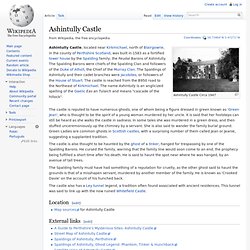

Castle. A European innovation, castles originated in the 9th and 10th centuries, after the fall of the Carolingian Empire resulted in its territory being divided among individual lords and princes.

These nobles built castles to control the area immediately surrounding them, and were both offensive and defensive structures; they provided a base from which raids could be launched as well as protection from enemies. Although their military origins are often emphasised in castle studies, the structures also served as centres of administration and symbols of power. Urban castles were used to control the local populace and important travel routes, and rural castles were often situated near features that were integral to life in the community, such as mills and fertile land. Many castles were originally built from earth and timber, but had their defences replaced later by stone. Definition Etymology Defining characteristics Terminology Common features Motte A motte was an earthen mound with a flat top.
Keep. Barony of Ladyland. Coordinates: 55°47′06″N 4°40′41″W / 55.785°N 4.678°W / 55.785; -4.678 The Barony of Ladyland was in the old feudal Baillerie of Cunninghame, near Kilbirnie in what is now North Ayrshire, Scotland.
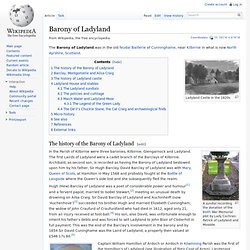
Ballindalloch Castle. The first tower of the Z plan castle was built in 1546.

After it was plundered and burned by James Graham, the first Marquess of Montrose, it was restored in 1645. The castle houses an important collection of 17th century Spanish paintings. The dining room of Ballindalloch is said to be haunted by a ghost known as The Green Lady.[1] The castle grounds contain a 20th-century rock garden and a 17th-century dovecote. The rivers Spey and Avon flow through the grounds, offering excellent fishing.
Today, the castle is still occupied by Clare Nancy Russell and her family. Traditions[edit] It is said that the original intention was to build at a better site defensively, but when building commenced whatever was built in the day was thrown down at night. References[edit] External links[edit] Bodiam Castle. Bodiam Castle is a 14th-century moated castle near Robertsbridge in East Sussex, England.
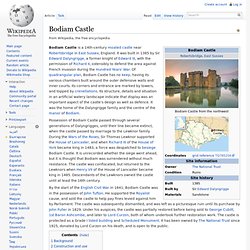
It was built in 1385 by Sir Edward Dalyngrigge, a former knight of Edward III, with the permission of Richard II, ostensibly to defend the area against French invasion during the Hundred Years' War. Of quadrangular plan, Bodiam Castle has no keep, having its various chambers built around the outer defensive walls and inner courts. Its corners and entrance are marked by towers, and topped by crenellations. Its structure, details and situation in an artificial watery landscape indicate that display was an important aspect of the castle's design as well as defence. It was the home of the Dalyngrigge family and the centre of the manor of Bodiam. Possession of Bodiam Castle passed through several generations of Dalyngrigges, until their line became extinct, when the castle passed by marriage to the Lewknor family. Background[edit] Construction and use[edit] Bodiam Castle was built on a fresh site. ...
Knock Castle (Isle of Skye) Knock Castle on the Isle of Skye, Sleat.
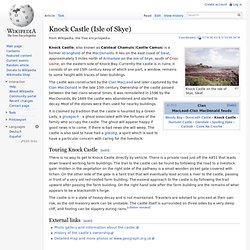
Knock Castle, also known as Caisteal Chamuis (Castle Camus) is a former stronghold of the MacDonalds. It lies on the east coast of Sleat, approximately 5 miles north of Armadale on the Isle of Skye, south of Cnoc Uaine, on the eastern side of Knock Bay. Currently the castle is in ruins; it consists of an old 15th century keep of which one part, a window, remains to some height with traces of later buildings.
Crathes Castle. Crathes Castle is a 16th-century castle near Banchory in the Aberdeenshire region of Scotland.
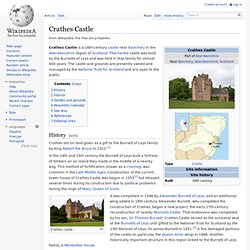
This harled castle was built by the Burnetts of Leys and was held in that family for almost 400 years. The castle and grounds are presently owned and managed by the National Trust for Scotland and are open to the public. History[edit] Crathes sits on land given as a gift to the Burnett of Leys family by King Robert the Bruce in 1323.[1] Ashintully Castle. Ashintully Castle Circa 1947 Ashintully Castle, located near Kirkmichael, north of Blairgowrie, in the county of Perthshire Scotland, was built in 1583 as a fortified tower house by the Spalding family; the Feudal Barons of Ashintully.
